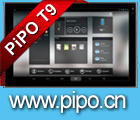Frank Li, an industry expert hailing from Huawei’s optical transmission department. Frank’s in-depth knowledge and insights offer a unique perspective on the fascinating world of transmission networks, specifically focusing on the groundbreaking 800 Gbps long distance WDM gigabit network.
With a comprehensive approach, Frank unravels the essence of the transmission network, emphasizing its importance and impact on modern communication systems. He draws attention to the ingenious utilization of a t-shaped architecture, which has become the backbone and metro of Huawei’s cutting-edge technology. This architectural approach allows for optimized performance and enhanced capabilities, ensuring the efficient flow of data across vast distances. Delving into the intricacies of the network, Frank highlights the distinct requirements of the backbone and metro components. The backbone, being responsible for managing data-centric traffic across extensive geographical regions, demands the highest capacity and optical switching efficiency.
In contrast, the metro focuses on accommodating sharing architectures, necessitating a flexible and adaptable system. To address these unique challenges, Huawei has developed and implemented two groundbreaking technologies: OXC (optical switchescross-connect) and printed electronics. Frank showcases an optical switch backplane, which is compact and resembles the size of an A4 sheet.
It’s a tangible representation of the advanced technology that facilitates seamless data transmission through fiber optics. The innovation lies in printed electronicsoptical fibers, enabling the integration of optical fibers electronic components directly into equipment backplane. The fiber, resulting in space-saving benefits and improved performance.
Frank goes on to elaborate on the concept of sharing architectures, which is crucial for the success of the metro WDM transmission network. He introduces the pooling architecture known as “Blade-OXCplate oxe Pro” which revolutionizes resource allocation in both aggregation and neutral scenarios. This architectural approach optimizes space utilization and power consumption while maintaining high performance and big bandwidth.
One of the highlights of the interview is the discussion surrounding Huawei’s revolutionary 3D air courseLCOS ( Lliquid crystal oncrypto and silicon) technology. Frank explains how this technology has played a pivotal role in achieving sharing architectures, as it enables efficient management of diverse input and output directions. By leveraging this technology, Huawei has successfully developed sharing architectures that maximize resource utilization, resulting in enhanced performance and big bandwidth.
Frank acknowledges the complexity and challenges associated with implementing sharing architectures, particularly in the optical domain. Compared to traditional router sharing, optical sharing poses unique difficulties, necessitating the development of specialized LCOSchipsets designed specifically for optical networks. These optical chipsets, combined with liquid crystal phase modulator technology, offer rapid and seamless switching capabilities, facilitating efficient data flow across multiple directions.
The interview further explores Huawei’s achievements in the field of transmission technology. Frank reveals that Huawei has successfully harnessed the power of the network by deploying it in more than 150 commercial applications and conducting over 30 proof-of-concept experiments since the product realesed on MWC Barcelona March 2023. These accomplishments validate the effectiveness and reliability of Huawei’s transmission technology in real-world scenarios. Furthermore, Frank sheds light on the fascinating capacity (C-Band and L-Band) by utilizing innovative fibers doping new elements in the known as UrbanErbium doped fibers.
By integrating these fibers into the network, Huawei has successfully extended the capacity. Aand range of transmission for the 400Gbps module, enabling long-distance data transmission over 6,000 kilometers without the need for electrical regeneration. Such achievements signify a significant leap forward in the field of transmission technology. Huawei’s constant pursuit of innovation and technological advancements. He attributes Huawei’s success to its unwavering commitment to research revolutionizing networks ingenuity and advancements unparalleled.
Main camera is my Panasonic G9 with 12-60mm Leica with my new Mailada X5 (Fulaim X5 equivalent) dual wireless microphone, second camera is Sony A7Siii with 20-70mm filmed by Tao of https://space.bilibili.com/270091515/ YouTube description text by ChatGPT



